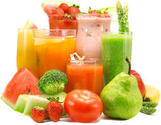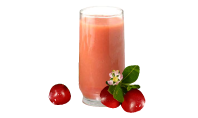
 juice of acerola cherries, possibly boost immune system and metabolism, remedy for diarrhea, anemia, diabetes, dysentery, fever, heart function. Cross-allergies with latex.
Comments
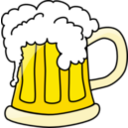 An alcoholic beverage made by fermenting cereal grains (most commonly malted barley, but also wheat, corn and rice) and flavored with hops. Third most popular drink overall, after water and tea Unique characteristics that help create specific styles of beer come from yeast strains and bacteria fermenting it. Main beer fermenters are yeasts: ale yeast Saccharomyces cerevisiae ("top-fermenting" type since they rise to the surface during fermentation, creating a very thick, rich yeast head) and lager yeast (the "bottom-fermenting" type, Saccharomyces uvarum). Yeast varieties such as Brettanomyces bruxellensis and Brettanomyces lambicus are common in lambics. In addition, other organisms such as Lactobacillus bacteria produce acids which contribute to the sourness. Pediococcus sours beers like lambics and Flanders. 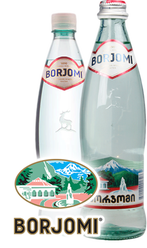 mineral water from springs of the Borjomi-Kharagauli National Park in central Georgia, southwest to the nation's capital of Tbilisi. Composition of the water remains stable over a long period of time and contains: hydrogen carbonates (3,500-5,000 mg/dm3), sodium (1,200-2000 mg/dm3, ~62% daily value per liter), potassium (30mg/dm3, 1% daily value per liter), calcium (100 mg/dm3 or 10% daily value per liter), chlorine (250-500 mg/dm3, about 12% daily value per liter), sulfates (50 mg/l), free carbonic acid (0.34-0.42%) and oxidation characteristic of 0.88-2.00 mg/dm3. It is said to help with gastrointestinal diseases and disorders of liver, biliary tracts, metabolism, kidneys, nervous system and respiratory organs. 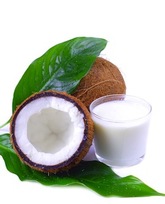 milky fluid extracted from the grated meat of a brown coconut (by pressing it or by passing hot water or milk through grated coconut). Staple food for those on a Paleo diet. Not the same as coconut water - a clear liquid in the fruit’s center that is tapped from young, green coconuts. The color and rich taste of coconut milk can be attributed to the high oil content (24%). Most of the fat is saturated fat (89%), with lauric acid (12:0) a major fatty acid  beverage consisting of an infusion of ground coffee beans (seeds of Coffea plants - small tropical African or Asian trees) with more than 800 aromatic compounds contributing to its rich aroma. At least 300 of these chemicals are wiped out by saliva, contributing to the fact that coffee never tastes as good as it smells. For most people, coffee increases productivity if drank after lunch but before 2pm. It increases activity and numbers of Bifidobacteria in the gut. Genetics of Cytochrome P450 determines fast or slow metabolism of coffee in the liver. Gut microbes could also contribute to breaking down caffeine - like Pseudomonas fulva in in the gut of coffee pests. 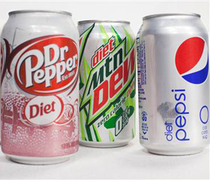 Sugar-free, zero-calorie or low calorie beverage, usually artificially sweetened. Consumption of diet drinks has increased considerably in the past few decades: from 3% in 1965 to 20% in 2010. It means that about 20% of the U.S. population aged 2 years and over consumes diet drinks on a given day - from 10% and 18% for teenagers to 26% and 28% for 40-50 year old males and females, respectively, respectively. (National Health and Nutrition Examination Survey - NHANES - data) 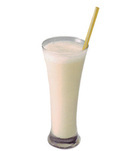 milky drink made from ground almonds, tiger nuts, sesame seeds, rice, barley, or tigernuts (small root vegetables known In Germany as Tigernuss or Erdmandel, in France as noix tigre or souchet chufas and in Spain as chufas) Horchata is a high calorie drink because of sugar, but - if without sugar - it could be recommended to those with celiac disease, digestive problems, and diabetics. It ontains a wide variety of minerals, such as phosphorus, magnesium and calcium, iron and potassium.  White opaque nutritious liquid (rich in fat and protein) secreted by mammals. Contains a diverse community of probiotics. Main bacteria in human milk are Proteobacteria and Firmicutes, including Staphylococcus (31%), Enterobacteriaceae (10%), Pseudomonas (17%), and Streptococcus (5%). Milk is one of the best sources of calcium, essential for healthy bones and teeth and a rich source of potassium. A glass of milk a day' may delay knee osteoarthritis in women. Calcium and lactose have been suggested to prevent ovarian cancer. Research also supports a relationship between higher intakes of calcium and reduced risks of colorectal cancer, but the results of studies have not always been consistent. The acidifying effect of animal proteins, however, could have a negative effect on bone health by causing the body to pull calcium from the bones to restore optimal blood pH. High amounts of saturated fat and cholesterol found in unprocessed milk have been also linked to an increased risk of heart disease. 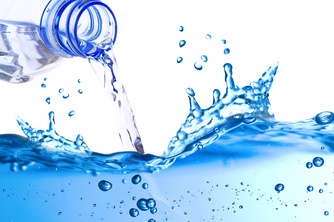 Water from a naturally occurring spring overflowing onto the land surface, containing various minerals, such as salts )of calcium, magnesium, sodium), alkali, and sulfur compounds. Mineral water may be fizzy )("effervescent" or "sparkling") due to contained gases. The quality of water discharged by springs can vary greatly because of factors such as the quality of the water. Some commercial mineral water is artificial ("synthetic") prepared in the lab. |
Categories
All
|
